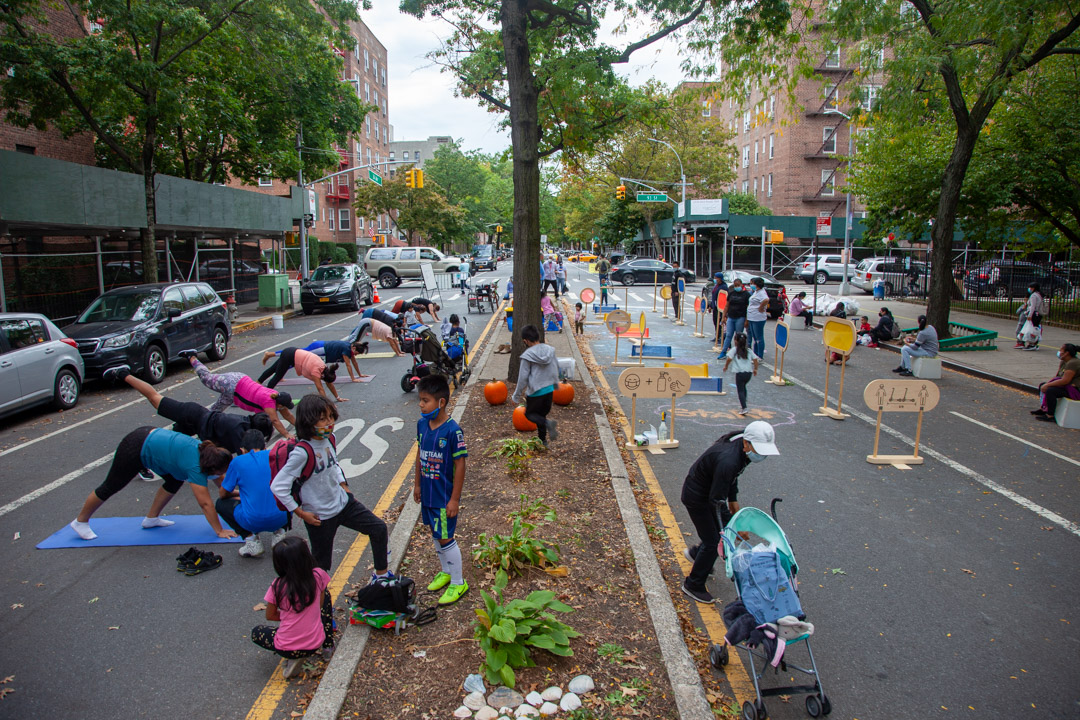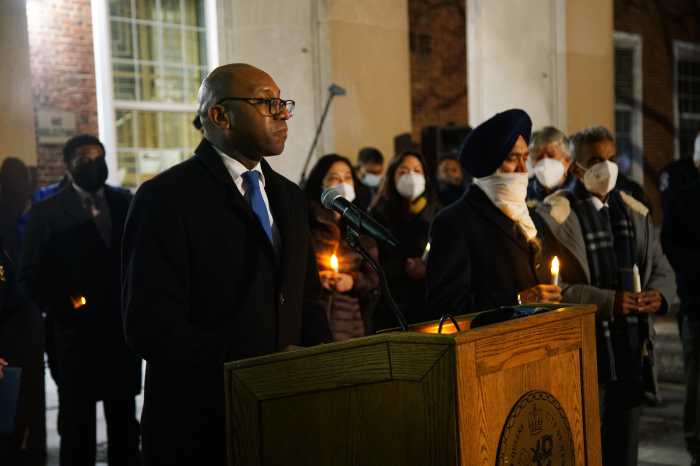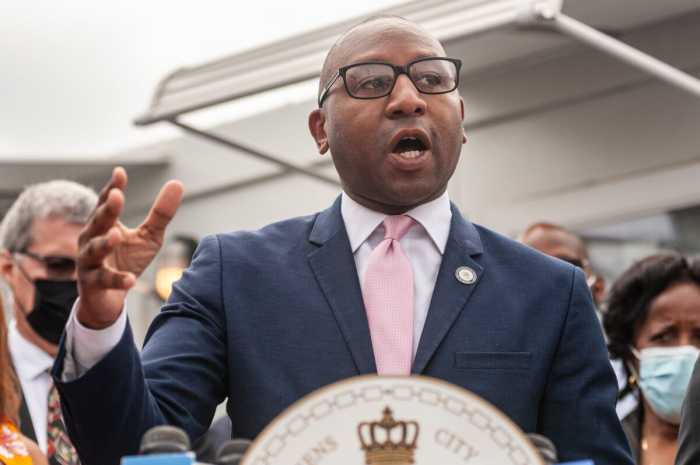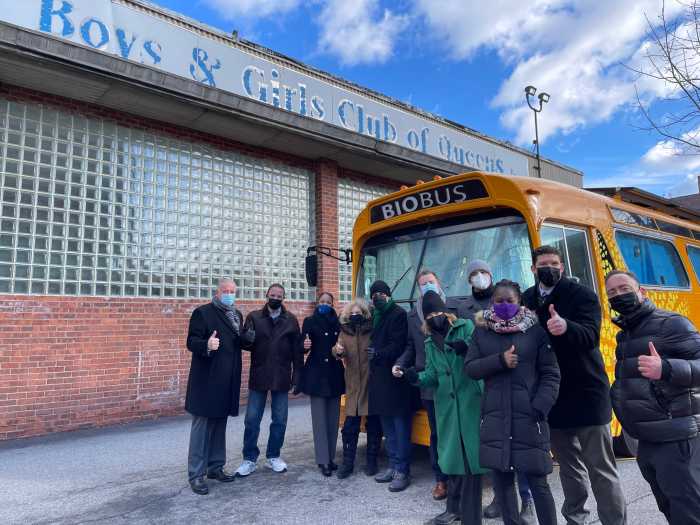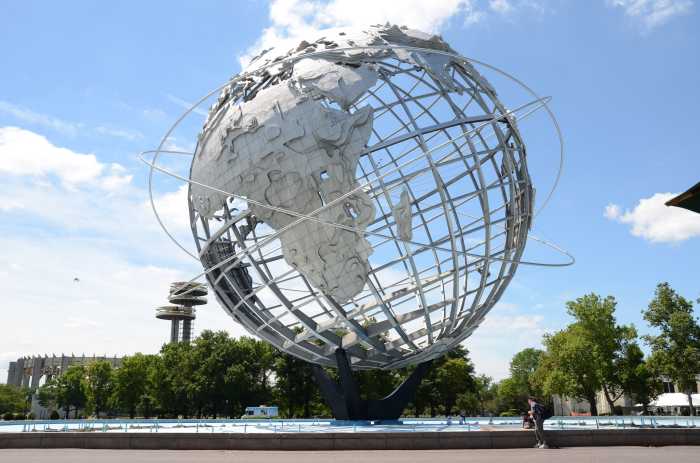The Queens Borough Cabinet held a virtual meeting Tuesday, Dec. 6, to discuss the Open Streets program and receive updates on the Queens Tech and Innovation Challenge. The meeting was chaired by Queens Borough President Donovan Richards and featured presentations from members of the New York City Department of Transportation (NYC DOT) and Deputy Borough President Ebony Young.
The Open Streets program closes certain streets to vehicle traffic, making it safer and easier for pedestrians and cyclists to be active and enjoy community activities. According to Kyle Gorman of the New York City Dept. of Transportation, who gave the presentation, the 2023 program updates include a streamlined application now available online for 2023, more support for partners and operational layers like programming and short-term concessions. Mayor Adams made an investment of nearly $7 million toward Open Streets across New York City.
Despite the success of the Open Streets program in 2022, some cabinet members voiced concern over its impact on nearby neighborhoods and residential buildings, as well as some local small businesses. While one community board member said Open Streets can be very good for areas that experience little street activity, there have been many cases this year where residents of nearby homes experienced trouble finding parking for themselves or guests. Some also complained about the noise from the Open Streets. As far as concerns about local small businesses, not all of them are incorporated into the Open Streets, forcing them to remain closed on certain days and weekends throughout the year and costing them revenue.
“I really feel that if DOT is going to go this route, people who are vested in the community, the residents who live there, really need to have a voice,” Community Board 1 District Manager Florence Koulouris said. “You may have 600 people coming for a circus, but they don’t live on the block. Imagine being able to go home and not have peace in your home. I’m not saying eliminate the Open Streets, but make the residents and the businesses on the Open Streets real partners within the program.”
Another major concern expressed in regard to the Open Streets program is the lack of communication to nearby residents about such upcoming events. The community board members said they don’t have the resources nor the manpower to notify the community about upcoming Open Street events. They felt this responsibility should fall upon the DOT.
According to Jason Banrey of the DOT, they do go door-to-door for smaller residential areas to try and let the residents know about upcoming events. He provided an example in which he and 15 to 20 others went door-to-door, but there have been many instances where the residents didn’t answer or, in the case of residential buildings, they were not permitted to enter by the building managers. To try and make up for this, they created a building email list service, granting access to it for community boards. They also held multilingual meetings. Banrey said they hope top extend these methods to other neighborhoods near future Open Streets locations.
Queens Borough President Richards recommended DOT work more closely with the community boards in organizing Open Streets in the future. He feels a continued dialogue will help them get on the same page and expand the program while also ensuring the businesses and residents in the area aren’t negatively affected.
Meanwhile, the Queens Tech and Innovation Challenge was launched by Richards last October. It is a multi-month competition for Queens-based entrepreneurs searching for funding to either launch or grow their startups. The initiative includes entrepreneurial classes, one-on-one mentorship opportunities and networking events to help applicants develop their pitches before they are heard by a panel of judges in the spring. This competition is meant to leverage the best assets of Queens to empower small business owners and transform the borough into a center of innovation and entrepreneurship.
According to Deputy Borough President Ebony Young, the tech ecosystem workforce in New York City does not reflect the city’s diverse population. The number of white people in the industry makes up approximately half of the entire workforce, leaving the remaining population of the workforce to be divided between African Americans, Asian Americans, Hispanic Americans and other minority groups.
Young suggested that breaking barriers to entry in tech can be achieved by creating an ecosystem to change. She feels this can be done by identifying how job and behavioral skills can create an empowering entry point into tech for marginalized people. Partnering with tech organizations and businesses to provide jobs in Queens can also prove beneficial, as well as collaborating with pilot countries, which could allow for some minority workers to feel more comfortable working with people from these countries who look more like them. All this could then lead to the borough’s most vulnerable constituents achieving thriving careers as they create wealth-building entry points.
Additionally, Young announced the date and time for the Queens Tech Fair. It will take place at the Greater Nexus in Jamaica on Jan. 21 from 10 a.m. to 1 p.m.
The Tech Fair will include several stations, including assessment, education/training, nonprofit assistance and resources, business/hiring, mentoring, interactive tech/illusionary workshops and breaking barriers.
Queens Economic Development Corporation Executive Director Seth Bornstein also revealed that the amount of prize money for the upcoming Queens Tech and Innovation Challenge has been doubled when compared to previous years. The winners for each of the five categories, which consist of three in tech, one in community and one in food, will each receive $20,000.

